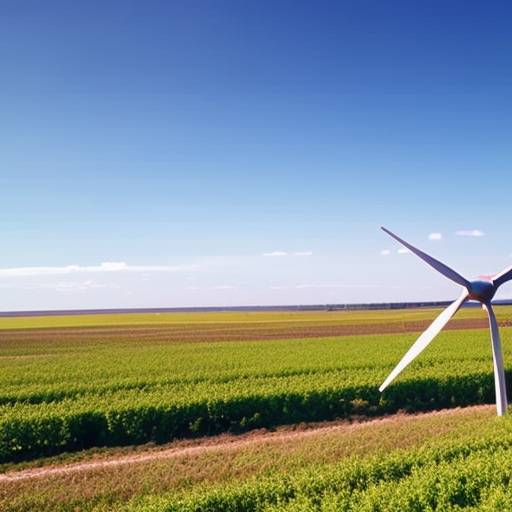Summary:
Wind energy is a renewable source of power that harnesses the kinetic energy of the wind to generate electricity. It is a clean and sustainable alternative to fossil fuels, with numerous benefits including reducing greenhouse gas emissions, creating jobs, and promoting energy independence. Wind turbines, the devices used to convert wind energy into electricity, have evolved over time and are now capable of producing large amounts of power. However, challenges such as intermittency and the need for suitable wind resources remain.
Overview:
Wind energy is a form of renewable energy that utilizes the power of the wind to generate electricity. It is a clean and sustainable alternative to traditional fossil fuel-based power generation methods. Wind turbines, which are typically installed in wind farms, capture the kinetic energy of the wind and convert it into electrical energy.
How Wind Energy Works:
Wind turbines consist of several key components, including rotor blades, a nacelle, a tower, and a generator. When the wind blows, it causes the rotor blades to spin. This rotational motion is transferred to the generator through a series of gears, which then converts the mechanical energy into electrical energy. The electricity generated is then transmitted to the power grid for distribution.
Advantages of Wind Energy:
Wind energy offers numerous advantages. Firstly, it is a clean source of power that produces no greenhouse gas emissions or air pollutants during operation. This helps to reduce the negative impacts of climate change and improve air quality. Additionally, wind energy is a renewable resource, meaning it will not deplete over time. It also provides economic benefits by creating jobs in manufacturing, installation, and maintenance of wind turbines. Furthermore, wind energy promotes energy independence by reducing reliance on imported fossil fuels.
Challenges and Limitations:
Despite its advantages, wind energy also faces some challenges and limitations. One of the main challenges is the intermittent nature of wind. Wind speeds can vary, and there may be periods of low or no wind, resulting in fluctuations in power output. To address this, wind farms are often located in areas with consistent wind resources. Another challenge is the visual and noise impact of wind turbines, which can be a concern for nearby communities. Additionally, the initial cost of setting up wind farms can be high, although the long-term operational costs are relatively low.
Technological Advancements:
Over the years, wind turbine technology has advanced significantly. Modern wind turbines are larger and more efficient than their predecessors, capable of generating more electricity. They are also equipped with advanced control systems that optimize performance and improve grid integration. Offshore wind farms have also gained attention due to the availability of stronger and more consistent winds. Floating wind turbines are being developed to harness wind energy in deeper waters.
Future Outlook:
The future of wind energy looks promising. As technology continues to improve, wind turbines are becoming more efficient and cost-effective. The development of energy storage systems, such as batteries, can help address the intermittency issue and provide a more reliable source of power. Governments and organizations around the world are increasingly investing in wind energy projects to meet renewable energy targets and reduce carbon emissions. With ongoing advancements and support, wind energy is expected to play a significant role in the global energy transition.












